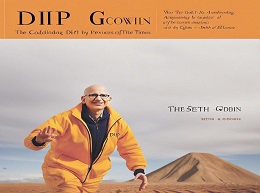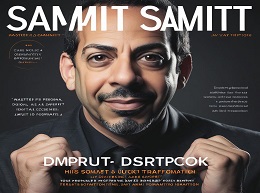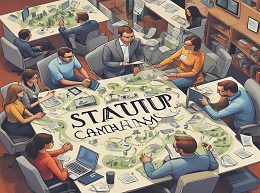Making Ideas Happen: Overcoming the Obstacles Between Vision and Reality

Bridging the Gap Between Vision and Reality
In a world brimming with creative ideas, the challenge often lies in transforming those visions into tangible outcomes. "Making Ideas Happen: Overcoming the Obstacles Between Vision and Reality" by Scott Belsky provides a comprehensive guide to turning ideas into actionable projects. Drawing from his experience as the founder of Behance and Adobe's Chief Product Officer, Belsky offers practical strategies and insights to help creative professionals and entrepreneurs navigate the journey from inspiration to execution.
Action Oriented Philosophy
Belsky emphasizes an action-oriented philosophy, where ideas are only as valuable as their implementation. He argues that creativity alone is not sufficient; it must be paired with systematic execution to achieve success. This philosophy challenges the romantic notion of the solitary genius and instead promotes a disciplined approach to creativity.
Example: The 99U Conference
Belsky's creation of the 99U Conference, a platform designed to empower creative professionals with practical advice and strategies, exemplifies his action-oriented approach. The conference focuses on making ideas happen, offering workshops and talks that equip attendees with the tools needed to bring their visions to life.
Capturing Action Steps
The Action Method, a central concept in the book, involves breaking down ideas into actionable steps. Belsky introduces a simple yet effective framework for organizing tasks: Action Steps, References, and Backburner Items. This method ensures that ideas are systematically captured and acted upon.
Example: Action Method in Practice
Consider a marketing campaign. Instead of vaguely aiming to "increase brand awareness," Belsky's method would involve specific Action Steps such as "design a social media strategy," "create content calendar," and "measure engagement metrics." Each step is clearly defined, making the overall goal more achievable.
Focusing on What Matters
Belsky stresses the importance of prioritizing tasks based on their impact. He suggests that creative professionals often get bogged down by less critical activities, leading to burnout and decreased productivity. By focusing on high-impact tasks, one can make significant progress toward their goals.
Example: Steve Jobs' Focus
Steve Jobs is renowned for his ability to prioritize. At Apple, he was known for saying no to numerous ideas and projects, allowing the company to concentrate on a few high-impact products. This focus on what truly mattered was instrumental in Apple's success, leading to groundbreaking innovations like the iPhone and iPad.
Building a Support Network
Belsky highlights the power of community and collaboration in making ideas happen. He encourages readers to build a support network of peers, mentors, and collaborators who can provide feedback, motivation, and accountability.
Example: The Pixar Braintrust
Pixar's Braintrust, a group of directors and storytellers who regularly provide feedback on each other's projects, exemplifies this principle. By fostering a collaborative environment where ideas are freely exchanged and critiqued, Pixar has consistently produced high-quality, successful films.
Embracing Limitations
Belsky argues that constraints can actually fuel creativity by forcing individuals to think outside the box. Instead of viewing limitations as obstacles, he suggests leveraging them to spur innovation and problem-solving.
Example: Twitter's Character Limit
Twitter's 280-character limit is a prime example of how constraints can drive creativity. This restriction forces users to be concise and creative in their messaging, leading to a unique form of communication that has become a defining feature of the platform.
Leading by Example
Effective leadership is crucial in turning ideas into reality. Belsky emphasizes that leaders must not only inspire but also provide clear direction and support. By setting an example and fostering a culture of execution, leaders can ensure that ideas are systematically pursued and realized.
Example: Elon Musk's Leadership
Elon Musk's leadership at SpaceX and Tesla illustrates the impact of leading by example. Musk's hands-on approach, relentless work ethic, and clear vision have inspired his teams to achieve remarkable feats, from launching reusable rockets to mass-producing electric vehicles. His commitment to execution has been a driving force behind the success of both companies.
Battling Doubt and Fear
Belsky addresses the common psychological barriers that hinder idea execution, such as doubt and fear of failure. He provides strategies for overcoming these obstacles, including building resilience, seeking feedback, and maintaining a positive mindset.
Example: J.K. Rowling's Resilience
J.K. Rowling faced numerous rejections before finally getting "Harry Potter and the Philosopher's Stone" published. Her perseverance in the face of doubt and failure ultimately led to the creation of one of the most successful literary franchises in history. Rowling's story underscores the importance of resilience and determination in making ideas happen.
Sustaining Long-Term Efforts
Maintaining momentum is critical in the long-term pursuit of ideas. Belsky suggests regular reflection and assessment of progress, celebrating small wins, and continuously refining processes to sustain motivation and drive.
Example: Agile Methodology
The Agile methodology, widely used in software development, embodies the principles of maintaining momentum. By breaking projects into smaller, manageable iterations and continuously reviewing progress, Agile teams can adapt quickly and maintain a steady pace of development. This iterative approach ensures sustained effort and incremental progress.
A Blueprint for Turning Vision into Reality
"Making Ideas Happen" provides a comprehensive blueprint for transforming creative visions into tangible outcomes. By adopting an action-oriented philosophy, leveraging community and collaboration, embracing constraints, and maintaining focus and momentum, individuals can overcome the obstacles between vision and reality.
Implementing the Lessons
Readers are encouraged to implement the lessons from "Making Ideas Happen" in their own projects. Whether it's organizing tasks with the Action Method, building a support network, or embracing constraints, these strategies can drive meaningful progress and success.
Continuous Adaptation
As the creative landscape continues to evolve, continuous adaptation remains critical. By staying informed about emerging trends and technologies, and remaining open to new ideas and approaches, individuals can navigate their creative journeys with confidence and achieve their goals.













